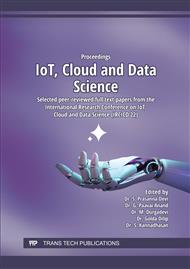p.355
p.362
p.370
p.378
p.392
p.398
p.409
p.418
p.426
Speech Accent Recognition
Abstract:
The speech accent demonstrates that accents are systematic instead of merely mistaken speech. This project allows detecting the demographic and linguistic backgrounds of the speakers by comparing different speech outputs with the speech accent archive dataset to work out which variables are key predictors of every accent. Given a recording of a speaker speaking a known script of English words, this project predicts the speaker’s language. This project aims to classify various sorts of accents, specifically foreign accents, by the language of the speaker. This project revolves round the detection of backgrounds of each individual using their speeches
Info:
Periodical:
Pages:
392-397
Citation:
Online since:
February 2023
Authors:
Price:
Сopyright:
© 2023 Trans Tech Publications Ltd. All Rights Reserved
Share:
Citation:


